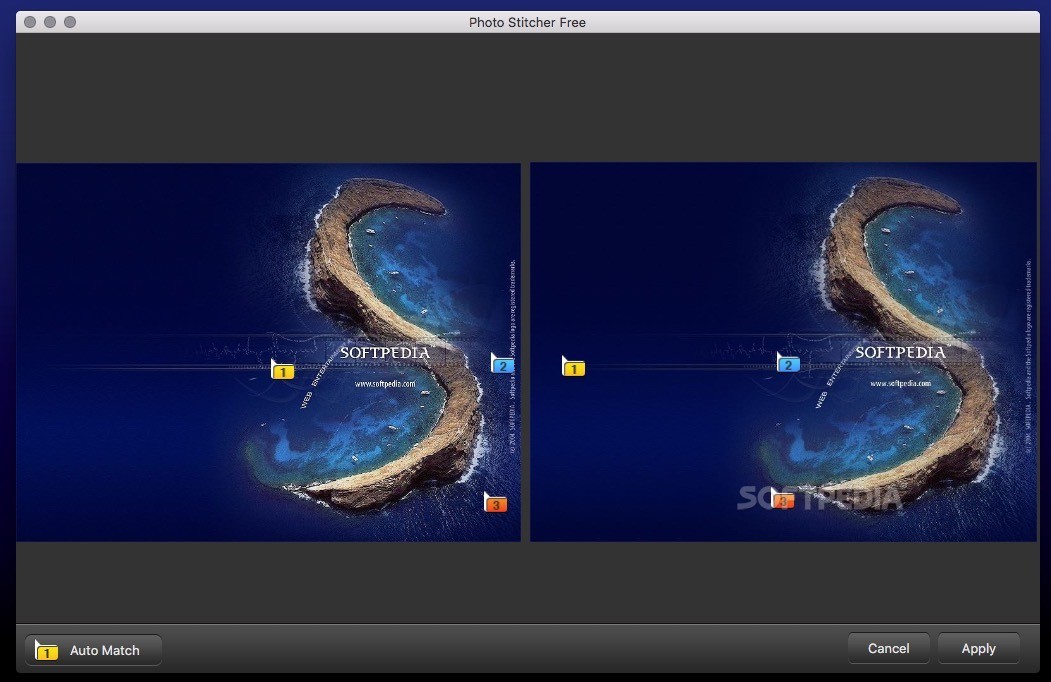

RawMatches = matcher.knnMatch(featuresA, featuresB, 2)

Matcher = cv2.DescriptorMatcher_create("BruteForce") # compute the raw matches and initialize the list of actual # return a tuple of keypoints and featuresĭef matchKeypoints(self, kpsA, kpsB, featuresA, featuresB, # convert the keypoints from KeyPoint objects to NumPy (kps, features) = tectAndCompute(image, None)ĭetector = cv2.FeatureDetector_create("SIFT")Įxtractor = cv2.DescriptorExtractor_create("SIFT") # detect and extract features from the imageĭescriptor = _create() # check to see if we are using OpenCV 3.X Gray = cv2.cvtColor(image, cv2.COLOR_BGR2GRAY) # return a tuple of the stitched image and the Vis = self.drawMatches(imageA, imageB, kpsA, kpsB, matches, # check to see if the keypoint matches should be visualized (imageA.shape + imageB.shape, imageA.shape)) # otherwise, apply a perspective warp to stitch the images # if the match is None, then there aren't enough matched (kpsB, featuresB) = tectAndDescribe(imageB)įeaturesA, featuresB, ratio, reprojThresh) (kpsA, featuresA) = tectAndDescribe(imageA) # unpack the images, then detect keypoints and extract
RAW IMAGE PANORAMA STITCHER CODE
The code is given below #import the necessary packagesĭef stitch(self, images, ratio=0.75, reprojThresh=4.0, And it is not working for my images(getting only the second image as the final resultant image). But it works well with given images alongside of the code. Luckily I found a code that do the trick. If you do end up with empty (white) areas, turn on Auto Crop or you leave it off and use Camera Raw’s Crop tool to get rid of them manually.I am trying to stitch two images by finding the keypoints and stitching the images accordingly using opencv and python (panoramic image stitching). On this Moloka’i palm grove pano, a Boundary Warp of 78 works well anything more begins to warp the horizon.
RAW IMAGE PANORAMA STITCHER FREE
Feel free to drag it all the way left, though watch your pano carefully. Next, drag the Boundary Warp slider rightward and watch as Camera Raw corrects the distortion around the edges of the pano. If it’s got a lot of lines in it (say, it’s an architectural shot), try Perspective. If it’s a 360-degree or multi-row pano (say, if you took two rows of photos), try Spherical. It’s worth taking each method for a spin, though if your pano is really wide (and the example is), Adobe suggests using Cylindrical. In the Panorama Merge Preview window, turn off Auto Crop and then pick the layout method you want Camera Raw to use for stitching. Pop into Camera Raw’s Lens Corrections panel, turn on Enable Profile Corrections and then use the menus that appear to pick lens manufacturer and the closest lens to the one you used. Since you may get a better result with those corrections, click Cancel. If it isn’t, you get a dialog that lets you cancel or continue without profile corrections. If the lens is in its database, the Panorama Merge Preview window opens. Camera Raw automatically tries to figure out what lens you took the picture with so it can correct distortion problems. Click the panel’s microscopic fly-out menu (circled here) and choose Merge to Panorama. In the Camera Raw window that opens, press Command-A to select all the images in the Filmstrip at left. Right-click one of them and choose Open in Camera Raw.īridge makes it easy to open files in Camera Raw, including JPEGs and TIFFs. If not, fire up Adobe Bridge and select the soon-to-be-stitched together photos. If the images are already open in Camera Raw, great. Because some localized edits won’t make it into the pano, you may as well wait and adjust the pano itself. Gather the images you want to stitch together, but don’t bother adjusting them yet. Photoshop also lacks the easy-to-use adjustments sliders in Camera Raw to get at them, you have to open the pano in the Camera Raw filter so you may as well use Camera Raw to begin with. Photoshop doesn’t have a Boundary Warp slider either, though its Photomerge dialog does have a Content-Aware Fill option that can fix empty spots. (If you’ve got Lightroom, stitch your panos there Lightroom CC 6.4 and later includes a Boundary Warp slider, too!)Īlthough you could use Photoshop’s Photomerge command to create a pano, the end result is pixel-based. And of course, Camera Raw has all those wonderful slider-based controls for adjusting exposure, contrast, highlights, shadows, etc. Heck, in the dark old ages of 2015, you had to use Photoshop’s Content-Aware Fill command to avoid cropping. This slider drastically reduces the need to crop empty areas from the pano due to the distortion voodoo involved in aligning the images. In version 9.4, Adobe included another mission critical feature for your pano pleasure: Boundary Warp.


 0 kommentar(er)
0 kommentar(er)
